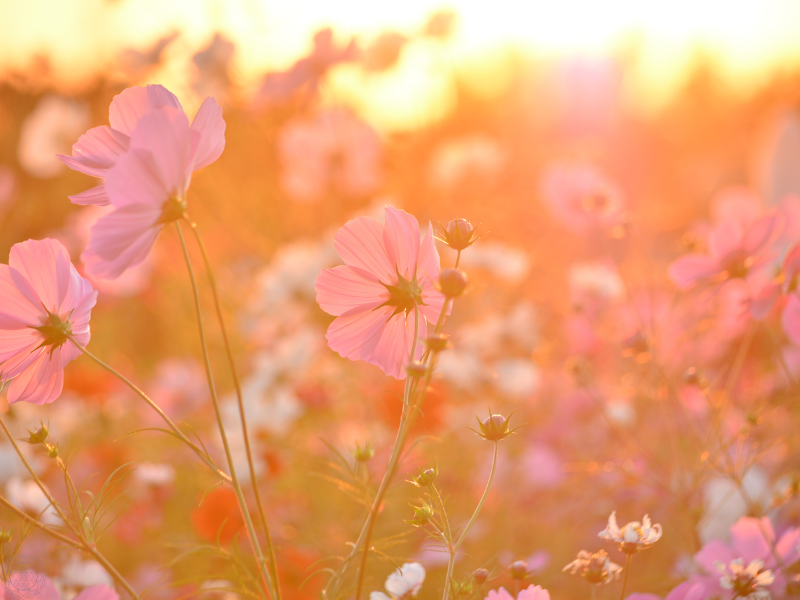Life is a beautiful interplay of energies. In ancient Indian philosophy, this interplay is explained through the concept of the 3 gunas. These three qualities- Sattva, Rajas, and Tamas – exist in all aspects of creation, shaping our minds, actions, and surroundings. Understanding these forces can help us achieve balance, harmony, and spiritual growth.
This post explores the 3 gunas in detail. It discusses their characteristics, how they influence our lives, and how to cultivate more Sattva for a fulfilling existence.

What Are the Gunas?
The word “guna” in Sanskrit translates to “quality” or “attribute.” According to Samkhya philosophy, the 3 gunas are the fundamental forces of Prakriti, or nature. They govern every aspect of the universe, from the physical to the mental and spiritual.
The gunas are dynamic. They are constantly interacting and influencing one another, shaping our experiences and states of being. While all three are present in everyone and everything, their proportions differ, creating unique expressions of life.
Understanding the gunas helps us align with nature, balance our inner world, and progress on the spiritual path.
The 3 Gunas Explained
1. Sattva – The Guna of Purity and Harmony
Sattva represents light, clarity, and balance. It’s the guna associated with peace, wisdom, and truth. When Sattva is predominant, the mind feels calm, focused, and content.
Definition of Sattva
- I am, purity, knowledge.
Characteristics of Sattva
- Positivity and compassion
- Mental clarity and purity
- Love for truth and knowledge
How Sattva Influences Us
- A sattvic state enhances creativity, intuition, and spiritual connection. Saatva draws us to Divinity, nobility, service, nature, art, and beauty. It leads to a deeper understanding of life and aligns us with our higher purpose.
Importance of Sattva for Mental and Physical Health
- Little resistance to Divine will, courage, concentration. When directed inward, it becomes the ‘yogic mind.’ An ability to surrender and a deeper trust of the Divine.
How to Cultivate Sattva
- Practice mindfulness and meditation.
- Eat fresh, whole, and plant-based foods.
- Surround yourself with positive environments and uplifting people.
- Read spiritual texts and engage in self-reflection.
- Control of senses.
- Learning, an open mind.
- Keeping a clean inner and outer space.
- Being of service (Seva)
2. Rajas – The Guna of Activity and Passion
Rajas represents movement, energy, and ambition. It drives action and change but can also lead to restlessness and attachment when excessive.
Definition of Rajas
- Activity, vitality, I want.
Characteristics of Rajas
- Desire and ambition
- Energy and action
- Restlessness and impatience
How Rajas Influences Us
- Rajas motivates us to achieve goals and overcome obstacles. However, too much Rajas can lead to stress, greed, and a sense of dissatisfaction. It draws us to the illusion of desire and fantasy.
Effect of Rajas for Mental and Physical Health
- Fantasies, lust, jealousy, anger, aggression, entanglements, hyper, ‘obsessive over-achiever,’ restless mind.
How to Balance Rajas
- Engage in mindful physical activities like yoga or walking.
- Practice gratitude to reduce attachment.
- Avoid overindulgence in stimulating foods or activities.
- Focus on actions that benefit others, not just personal gain.
- Reduce consumption of animal-based foods.
- Reduce consumption of stimulants such as coffee and other forms of caffeine.
- Reduce fighting, debating, and other forms of harsh language.
- Reduce consumption of pungent and spicy food such as garlic, onion, and chili pepper.
3. Tamas – The Guna of Inertia and Ignorance
Tamas represents darkness, stagnation, and confusion. It is necessary for rest and recovery but becomes harmful when excessive. If Rajas is an overactive mind, Tamas is an underactive mind.
Definition of Tamas
- Inertia, embodiment.
Characteristics of Tamas
- Lethargy and procrastination
- Ignorance and confusion
- Attachment to destructive habits
How Tamas Influences Us
- When tamas dominates, it leads to apathy, depression, and a lack of motivation. It prevents growth and keeps us stuck in negative patterns. It draws us to obstruction, stagnation, disintegration, and decay.
Effects of Tamas for Mental and Physical Health
- Holding onto form, stubbornness, not receptive to growth or expansion, dull mind.
How to Overcome Tamas
- Start with small, manageable changes to create momentum.
- Expose yourself to light, fresh air, and uplifting environments.
- Avoid heavy, processed, hard to digest, or stale foods.
- Seek knowledge and engage in meaningful activities.
- Avoid alcohol.
- Avoid processed food, red meat, and dead/ lifeless food.
- Avoid oversleeping and overindulgence.

Moving from Tamas to Rajas to Sattva
Transformation is a gradual process. To reach Sattva, we must often move through Rajas. When stuck in tamas, the first step is creating movement (Rajas). From there, we refine our actions to align with purity and truth (Sattva).
For example, if you feel lethargic (Tamas), you can start by introducing energizing habits like exercise (Rajas). Once your energy is balanced, focus on activities that calm the mind, like meditation (Sattva).
The Importance of Sattva
Sattva is the ultimate state of balance. It represents the purest expression of our being and aligns us with our spiritual goals. While the other gunas are essential for functioning, living predominantly in a sattvic state leads to peace, wisdom, and lasting happiness. Both yoga and Ayurveda seek to lower Rajas and Tamas.
Tips for Cultivating Sattva
1. Meditate Regularly
Meditation quiets the mind and promotes inner clarity. There are various forms of meditation to experiment with.
2. Eat a Sattvic Diet
Include fresh fruits, vegetables, nuts, seeds, and whole grains. Avoid processed or overly spicy foods.
3. Surround Yourself with Positivity
Spend time in nature, listen to uplifting music, and reduce exposure to negativity.
4. Practice Selfless Service
Acts of kindness and service purify the heart and reduce selfish tendencies.
5. Engage in Self-Reflection
Journaling, reading spiritual texts, and introspection foster inner growth.
6. Wake Early
The early morning hours (Brahma Muhurta) are naturally sattvic, perfect for meditation or journaling.
7. Practice Silence
Spend time in quiet contemplation or take a day of silence to reset the mind.
8. Chant Mantras
Mantra meditation, such as chanting “Om,” purifies the mind and uplifts the spirit.
9. Simplify Your Life
Declutter your living space and focus on what truly matters.
Pranayama Techniques to Balance the 3 Gunas
Pranayama offers an effective way to balance the 3 gunas – Sattva, Rajas, and Tamas. To cultivate sattva, practices like Nadi Shodhana (alternate nostril breathing) and Ujjayi (ocean breath) promote calmness and mental clarity. For calming overstimulated rajas, cooling pranayamas like Sheetali (cooling breath) and Sheetkari (hissing breath) are ideal. To overcome tamas, energizing techniques such as Kapalabhati (skull-shining breath) and Bhastrika (bellows breath) can stimulate the mind and body. A balanced approach involves moving from tamas to rajas with energizing pranayamas, then shifting to sattva with calming techniques like Nadi Shodhana, creating harmony and well-being.

Essential Oils for Guna Balancing
Aromatherapy provides a gentle yet powerful method for balancing the 3 gunas through the therapeutic properties of essential oils. By carefully selecting and using specific oils, you can harmonize your mental and physical state, moving toward a sattvic way of being. Here are some essential oils that can help balance each guna:
- Tamas: Stimulating oils like sage, thyme, black pepper, and myrrh awaken the senses and dispel lethargy. Hot, spicy oils are best. Diffuse these oils in the morning for a burst of energy.
- Rajas: Calming oils like lavender, chamomile, rose, and vetiver reduce overstimulation. Cool and pleasant oils are best. Apply a few drops to your temples during stressful moments to restore balance.
- Sattva: Sacred oils like sandalwood, frankincense, basil, and cinnamon promote tranquility and spiritual awareness. Warming oils are best. Use them in meditation or as part of your self-care rituals.
Moving Towards Balance and Clarity
The 3 gunas are the key to understanding the dynamics of nature and the mind. By recognizing their influence, we can take conscious steps to balance them and move toward Sattva.
Remember, progress is a journey. With patience and commitment, you can align with the guna of purity and experience the joy of living in harmony with nature and yourself.
This post was all about the 3 gunas of the mind.
Other Posts You May Like:
Hi love!
I’m a Nutritional Therapy Practitioner and Dharmic Healer looking to guide you back to your true Self through various mind, body, and spirit healing modalities.
I’m Rana.
LEARN MORE
Leave a Reply Cancel reply
Rana is a Nutritional Therapy Practitioner and Dharmic Healer here to guide you back to your true Self through various mind, body, and spirit healing modalities.
HOME
ABOUT
CONTACT
BLOG
SHOP
OFFERINGS
© Mantras and Mulberries.